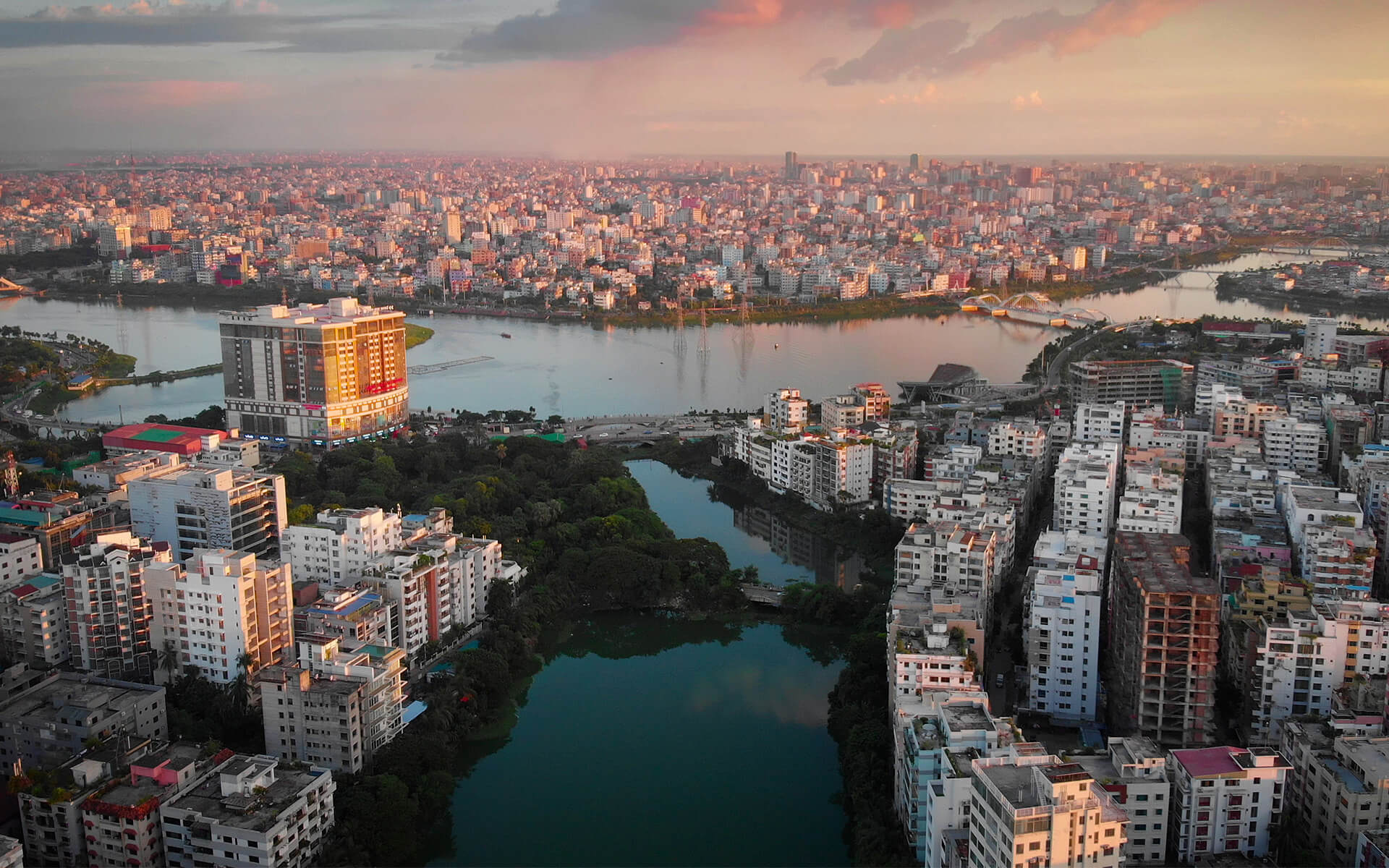Dhaka (formerly known as Dacca) is the capital and largest city of Bangladesh. It is the cultural and economic hub of the country. Having a colossal historical background, the old part of the city, known as Old Dhaka or Old Town, is home to a broad range of architectural heritage starting from the vestiges of the Mughal Empire to the British Colonial buildings. Being the centre of the independence movements of Bangladesh, Dhaka also hosts some significant national monuments and structures. There are a number of annual cultural events held in Dhaka like Pohela Falgun, Pohela Baishakh and Ekushey Book Fair which add a unique flavour to the city.
Dhaka is a thriving, colourful and congested metropolis of 20 million people. Given the number of people that live there, and the density they live in, Dhaka is one of the most frenetic places on Earth. The streets and rivers are filled with colourful chaos. It also plays host to the highest number of rickshaws in any city in the world, totalling around 400,000; you certainly won’t miss them. Experiencing the city for the first time can often seem overwhelming.

The existence of a settlement in the area that is now Dhaka dates from the 7th century. The area was ruled by the Buddhist kingdom of Kamarupa and the Pala Empire before passing to the control of the Hindu Sena dynasty in the 9th century. The Islamic Mughal Empire soon seized control of the city and turned it into a centre of trade and governance. In the years of their vigorous rule, the successive governors and princely viceroys who ruled the province adorned it with many noble monuments, mosques, tombs, fortifications and ‘Katras’, often surrounded with beautifully laid out gardens and pavilions. The city passed through another phase under the rule of the British, until it became the seat of the eastern division of Pakistan after Indian partitioning. The Liberation War of 1971 gave Bangladesh its independence and Dhaka was declared the country’s capital.
Since then, Dhaka has been developing fast as a modern city and is the country’s centre of industrial, commercial, cultural, educational and political activity. The gap between rich and poor is widening throughout the country, but it’s at its most glaringly obvious here. Depending on where you start from, a thirty minute rickshaw ride can take you from impossibly crowded shanty towns near Old Dhaka to the glitzy high-class neighbourhoods of Gulshan and Banani where a meal costs more than most people earn in a week.


